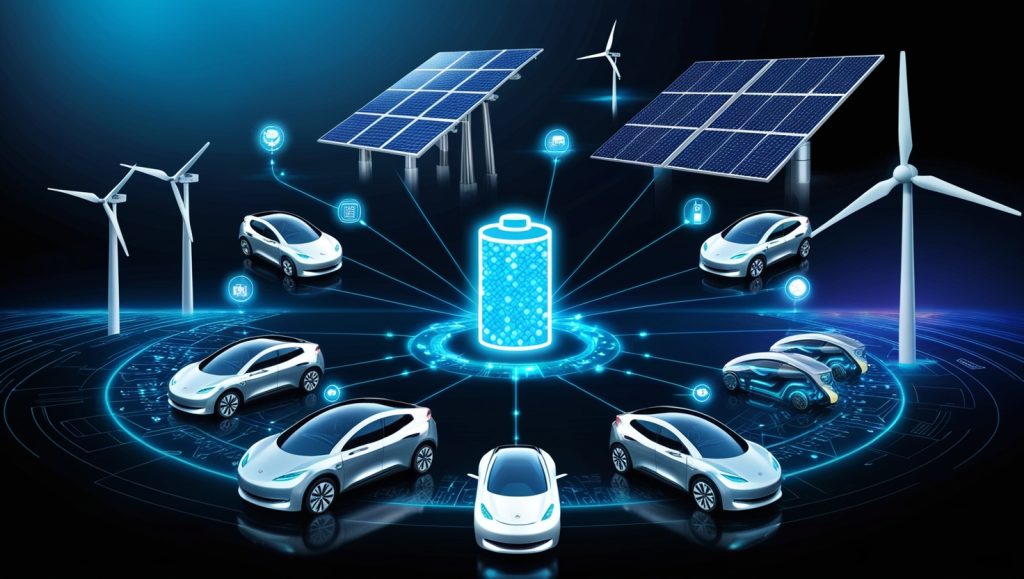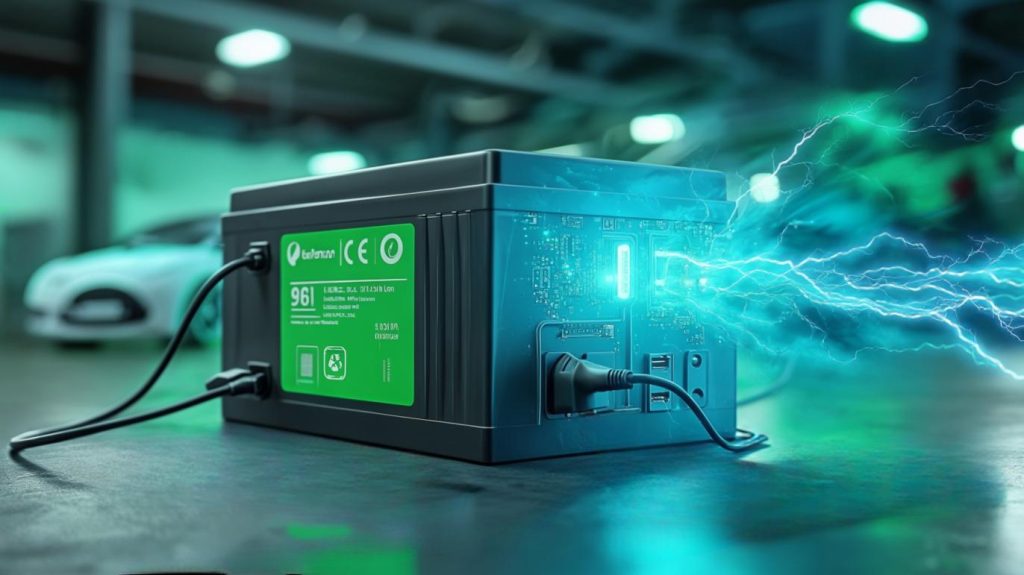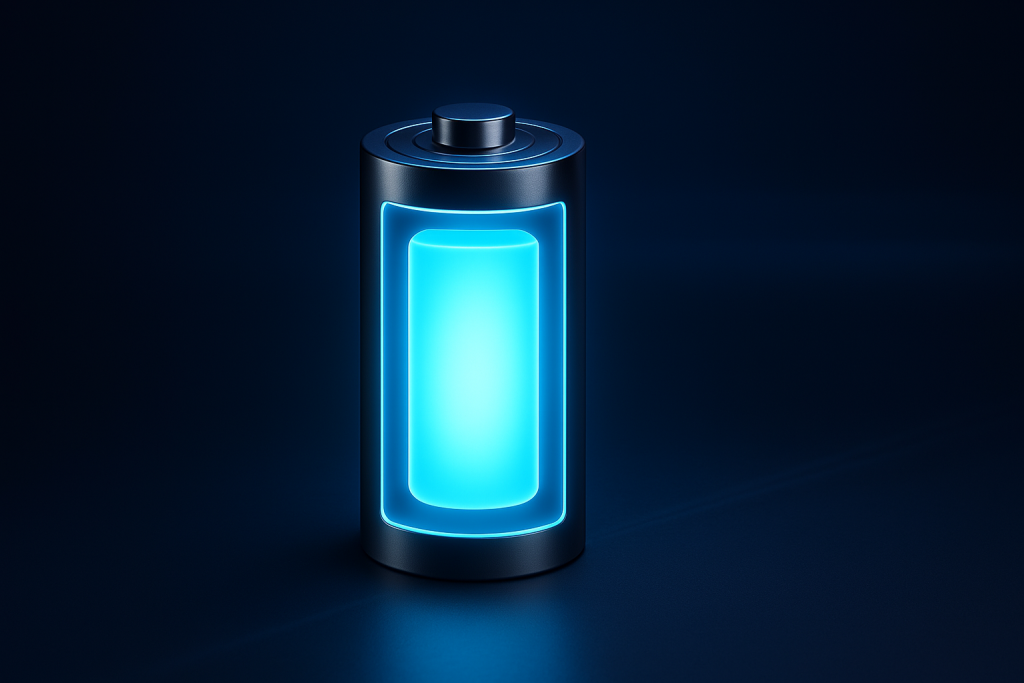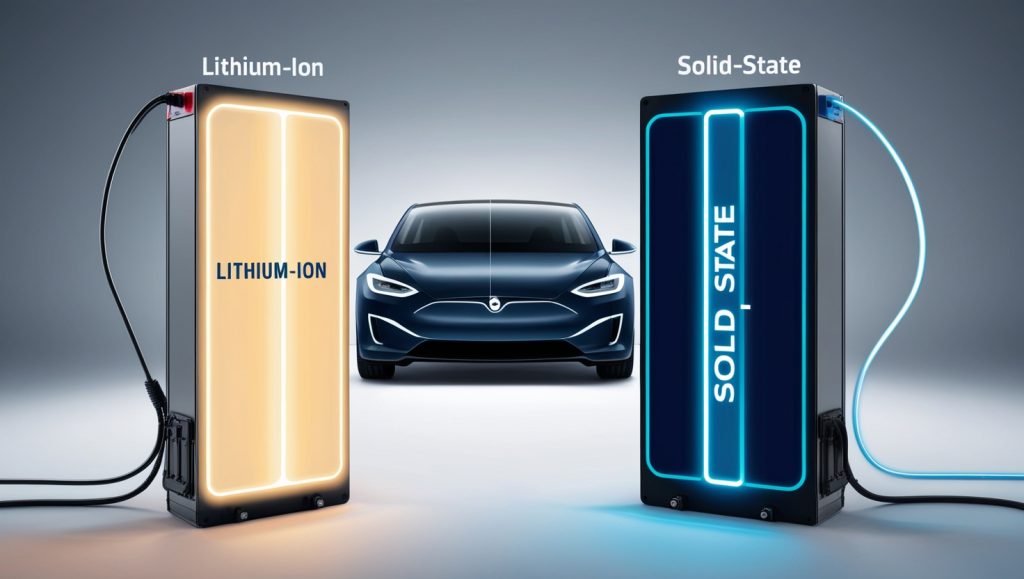Lithium-Ion vs Solid-State: Which Energy Storage Technology Wins?
Table of Contents
1. What’s Fueling the Battery Revolution?
2. Quick Take For Busy Readers
3. Why Lithium-Ion Still Rules the Market (For Now)
4. The Solid-State Surge: Why Everyone’s Talking About It
5. Head-to-Head: Which Battery Tech Has the Edge?
6. Beyond the Specs: Where These Batteries Are Making a Difference
7. India’s Battery Boom: A Race Worth Watching
8. Not a Winner-Takes-All Game
9. Final Charge: What It All Means for a Greener Tomorrow
What’s Fueling the Battery Revolution?

The future of energy storage is undergoing a major transformation. As our world moves toward electrification, be it electric vehicles (EVs), renewable power grids, or smart devices, battery technology sits at the heart of this evolution. But a new challenger is gaining ground: solid-state batteries. So, in the debate of solid-state batteries vs lithium-ion, which energy storage technology truly leads the way?
Let’s break down the differences, strengths, challenges, and real-world implications of both technologies, so you can decide which one is ready to power the future.
Short on Time? Quick Take For Busy Readers
Lithium-ion batteries power today’s world, affordable, proven, but not perfect.
Solid-state batteries offer a safer, faster, longer-lasting future, but aren’t mass-market yet.
Co-existence is likely. India could emerge as a global leader in battery manufacturing.
Lithium-Ion Batteries: The Tried and Tested Powerhouse Lithium-ion batteries have been around since the early 1990s. They’re currently the dominant force in consumer electronics, electric vehicles, and even grid-scale storage.
Have a little more time? Let’s dive into the full picture of how these two technologies compare, compete, and complement each other.
Lithium-Ion Batteries: The Tried and Tested Powerhouse

Lithium-ion batteries have been around since the early 1990s. They’re currently the dominant force in consumer electronics, electric vehicles, and even grid-scale storage.
Why Lithium-Ion Still Leads Today
- High energy density: Li-ion batteries can store a lot of energy in a relatively small space, ideal for smartphones, laptops, and EVs.
- Proven technology: They’re mass-produced at scale, with decades of testing and refinement.
- Decreasing costs: With innovations in manufacturing and material sourcing, the cost per kWh has fallen dramatically over the last decade.
But Not Without Drawbacks
- Flammability risk: The liquid electrolyte inside is flammable and poses a safety hazard if damaged or overheated.
- Limited lifespan: Over time, the battery’s capacity degrades, especially in harsh temperatures.
- Environmental concerns: Mining of lithium and cobalt, both key materials, raises ethical and ecological issues.
Solid-State Batteries: The Futuristic Contender

Solid-state battery technology replaces the liquid electrolyte in lithium-ion batteries with a solid one, either ceramic, glass, or polymer. This one change brings with it a suite of benefits and new challenges.
What Makes Solid-State a Game-Changer
- Greater safety: The solid electrolyte is non-flammable, reducing the risk of battery fires or explosions.
- Higher energy density: Solid-state batteries can theoretically store 2x to 3x more energy than lithium-ion batteries in the same space.
- Longer lifespan: Reduced chemical degradation means these batteries can last longer and hold a charge more efficiently over time.
- Faster charging: Early prototypes show the potential for much faster charge times without overheating.
The Catch? Manufacturing Challenges
- Scalability issues: Producing solid-state batteries at a commercial scale remains difficult and expensive.
- Material stability: The interface between solid materials can create resistance or instability over time.
- Cost: Current prototypes are far costlier than lithium-ion batteries.
Comparative Breakdown: Solid-State vs Lithium-Ion
| Feature | Lithium-Ion | Solid-State |
| Energy Density | Medium to High | Very High |
| Safety | Moderate (flammable) | High (non-flammable) |
| Cycle Life | ~500–1,500 cycles | Potentially 2,000+ cycles |
| Charging Time | 30 min – 2 hrs (fast charging) | Under 15 mins (in theory) |
| Cost | Falling (~$100/kWh) | Still high |
| Commercial Availability | Mass market | Pre-commercial/early stage |
Why This Battle Matters for the Future of Energy Storage
Electric Vehicles (EVs)
EV giants like Toyota, BMW, and QuantumScape are investing heavily in solid-state tech. A solid-state EV battery could double driving range and halve charging time, potentially making EVs more appealing than petrol cars.
Renewable Energy Storage
Energy from solar and wind is intermittent. Long-lasting, high-capacity solid-state batteries could help store surplus energy more safely and efficiently, making renewable grids more reliable.
Consumer Electronics
Thinner, more efficient batteries could power next-gen wearables, smartphones, and laptops, with less heat and more battery life.
🇮🇳 The Indian Angle: A Market Ripe for Disruption
India, with its massive EV push and increasing solar adoption, is keeping a close eye on this race. The PLI scheme (Production Linked Incentive) for advanced battery storage is helping local manufacturers develop both lithium-ion and next-gen alternatives.
Companies like Ola Electric and Amara Raja are exploring solid-state battery R&D partnerships to stay future-ready. As demand for cleaner, safer, and more reliable energy solutions grows, India could become a key manufacturing hub for both technologies.
So, Who Wins the Energy Storage Race?

Right now, lithium-ion still wins the practicality battle. It’s affordable, scalable, and already powering the devices and vehicles around us.
But solid-state batteries are gaining momentum and could win the long-term energy storage technology war, especially once manufacturing hurdles are overcome. The key lies in research, investment, and innovation over the next 5–10 years.
A Co-Existence, Not a Replacement
Rather than one replacing the other overnight, it’s likely we’ll see a hybrid future, where both technologies serve different purposes. Lithium-ion will continue to power most consumer electronics and EVs in the short term. Solid-state batteries will gradually take over high-performance niches and eventually become mainstream as tech matures.
For now, the battle of solid-state batteries vs lithium-ion continues—but the biggest winner? The future of sustainable energy.
Sources
https://time.com/6358257/lithium-ion-solid-state-ev-battery-innovation/
https://en.wikipedia.org/wiki/Sodium-ion_battery
https://en.wikipedia.org/wiki/Solid-state_battery
https://www.youtube.com/watch?v=d0qETvi9FSY
https://www.nature.com/articles/s41560-023-01208-9
https://www.cbtnews.com/toyota-to-launch-solid-state-battery-production-by-2026/
https://www.wired.com/story/quantumscape-solid-state-battery/
https://www.laserax.com/blog/solid-state-vs-lithium-ion-batteries
https://www.reuters.com/business/energy/japans-idemitsu-build-lithium-sulphide-plant-help-support-toyotas-ev-plans-2025-02-27/

